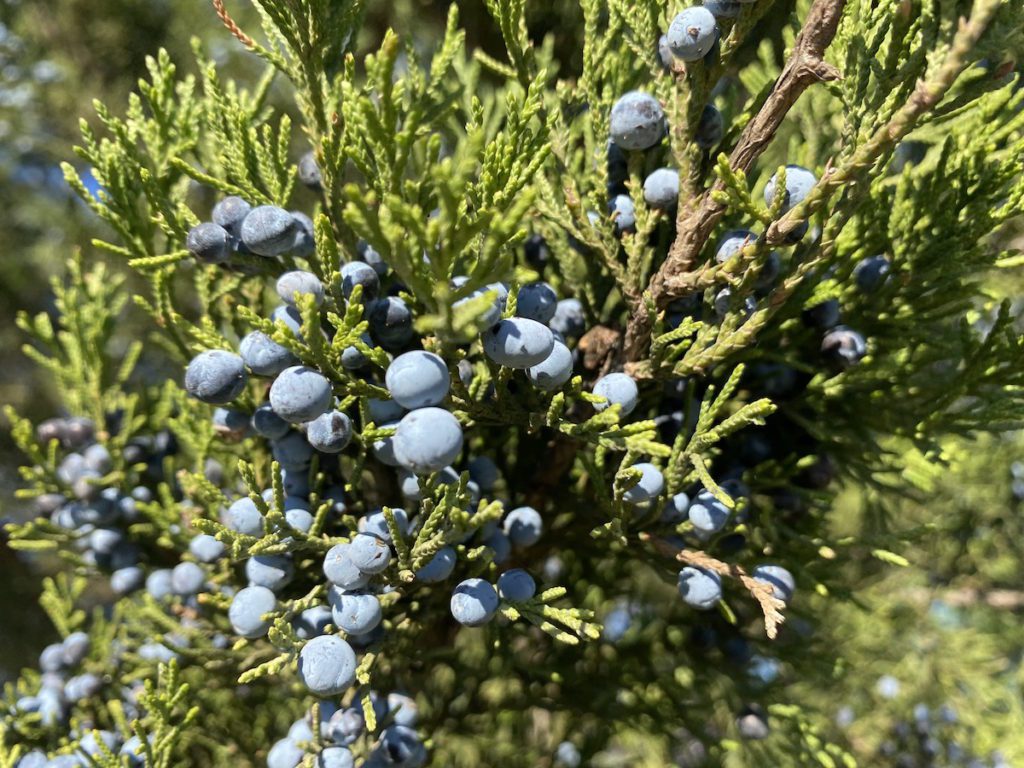A trip to the softball fields in Burleson, Texas this weekend had me running for my notebook to jot down my thoughts for a PSA blog this week. One look at the trees that lined the perimeter of the fields and i just knew I had to write a PSA on Cedar Fever, and the intense allergies that come along with it. The Texas Mountain Cedar tree limbs were laden with large amount of cedar berries. My mind produced a terrifying image of puff after puff of pollen exploding into the air. My eyes were watering just thinking about it, hence the reason for the Cedar Fever PSA blog today.
For those affected by Cedar Fever, it is no joke. It is, however, a very interesting phenomenon that happens every year, all over our city and surrounding areas. Anyone who has lived in Texas through the months of December and January, has more than likely heard the words “Cedar Fever”. How many of us know more about it than the fact that it can make you want to tear your eyeballs out or walk around with wads of tissues stuffed up each nostril, feeling no embarrassment whatsoever? Let’s take a look at this Texas terror and use this blog as a reminder to think about starting your allergy regime to fight it if you haven’t already. In tongue and cheek fashion, here are the: What, Who, Why, Where and When of Cedar Fever.




Facts About Texas Mountain Cedar Fever
- What: Cedar Fever is the term designated to the widespread onslaught of severe allergic reactions brought on when the Texas Mountain Cedar trees release their pollen into the air. Some unlucky San Antonio and surrounding Texas city residents have to experience this wretched period of time on a yearly basis.
- Who: The culprits of Cedar Fever are the predominant species of Mt. Cedar, the Ashe juniper. While technically these trees are junipers, you are more likely going to hear them called Mountain Cedar. Also… cedar rhymes more with fever than juniper does, ha! Another note is that it is only the male trees that release the pollen. Thanks guys, love ya!
- Why: The reason it is so vicious is because we have a huge quantity of Ashe junipers in Texas. The numbers of these Ashe junipers, packed in so densely throughout the state makes the concentration of pollen incredibly high. The fact that they basically all release their pollen about the same time compounds the problem further. Even people who generally aren’t bothered by seasonal allergies can succumb to Cedar Fever.
- Where: Cedar Fever is all around Texas and areas that are west of I-35 supposedly get the worst of it. Don’t make the mistake of thinking you are safe even if you live in an area that is sparse with Ash junipers; when the wind blows through, it can carry the concentrated pollen for miles. Gotcha!
- When: Cedar Fever usually starts in December and lasts through January, as this is generally the time the pollen is released. Usually the onslaught of this is soon after a cold front. Air pressure changes and tends to dry out after a cold front and this seems to trigger the release of the pollen. When the wind picks up and blows through the limbs of the Ashe junipers the pollen puffs begin to wreak their havoc. Who knows how the Mountain Cedars are going to behave this year after last year’s big freeze? What if Cedar Fever starts earlier this year? Here is my special tip: Whatever your allergy regimen is, my advice is to start it up now if you haven’t already. This way you’ll hopefully have been building up your immunity for at least a month. Of course, please use common sense and consult your doctor before trying anything new allergy remedies.
I wasn’t really meaning to spread doom and gloom, rather I wanted to just give you a heads up. When I saw all those berries on the trees (pictured in this blog), I was reminded of what was around the corner and just wanted to make sure you were reminded too! You can always check the pollen count at various websites to gauge whether it is worth it to venture outside at the height of Cedar Fever. I wish you good luck and I hope you find the softest tissues out there.
~The Happy Gardener, Lisa Mulroy


You were spot on. I had horrible allergies Spring 2022. Went to the allergist and I am allergic to Mountain Cedar, elm, and Prairie Sage/pigweed. I wound up on antibiotics, nasal sprays. I live in Galveston County. I suffered thru Easter, Mother’s Day, Memorial Day
Oh boy! Sounds like you really went through it! Gear up again soon…..it’s coming our way before you know it!